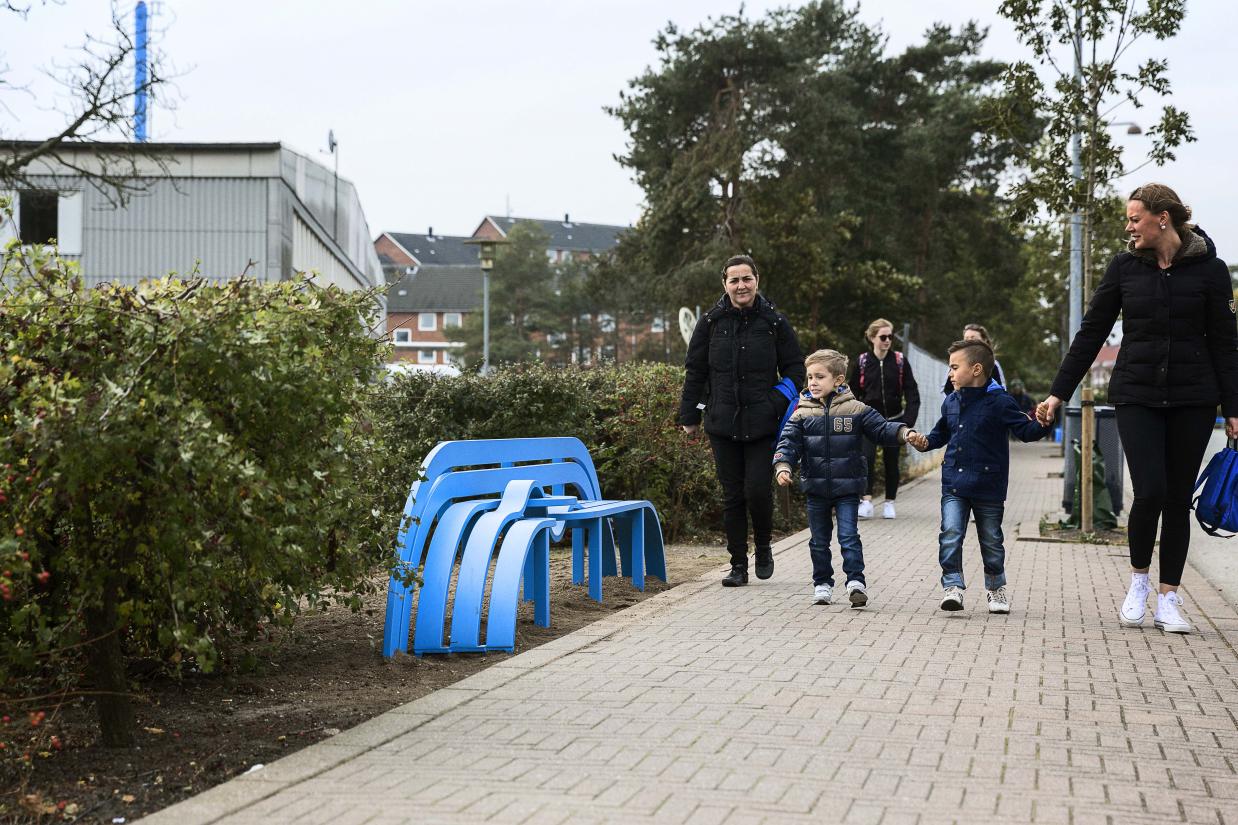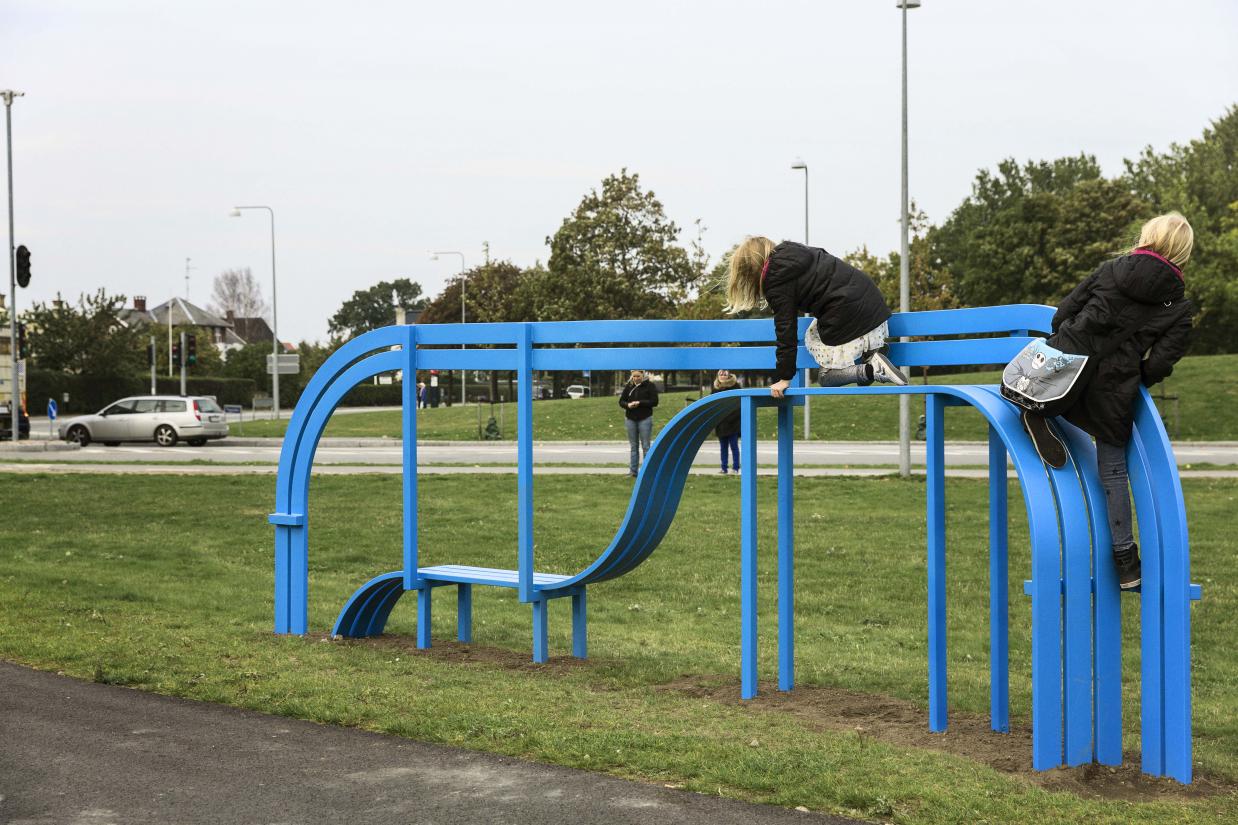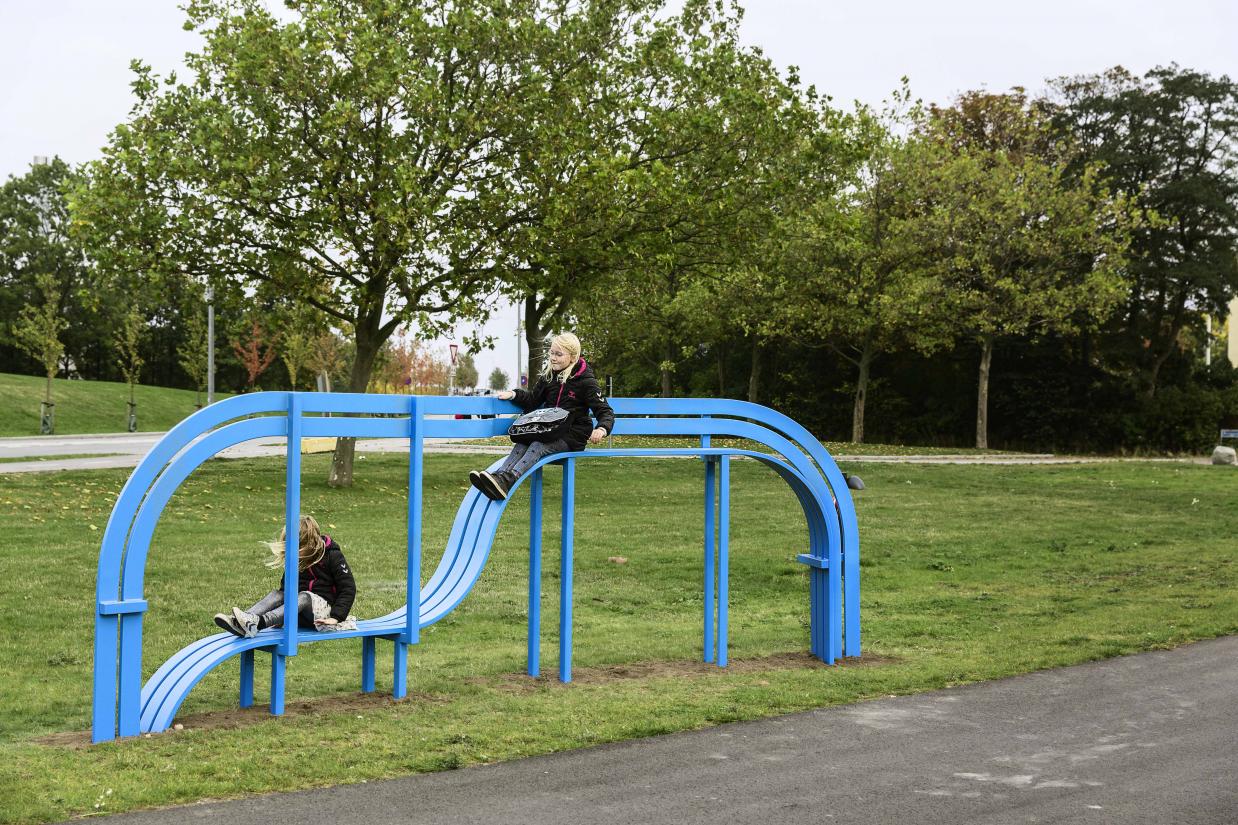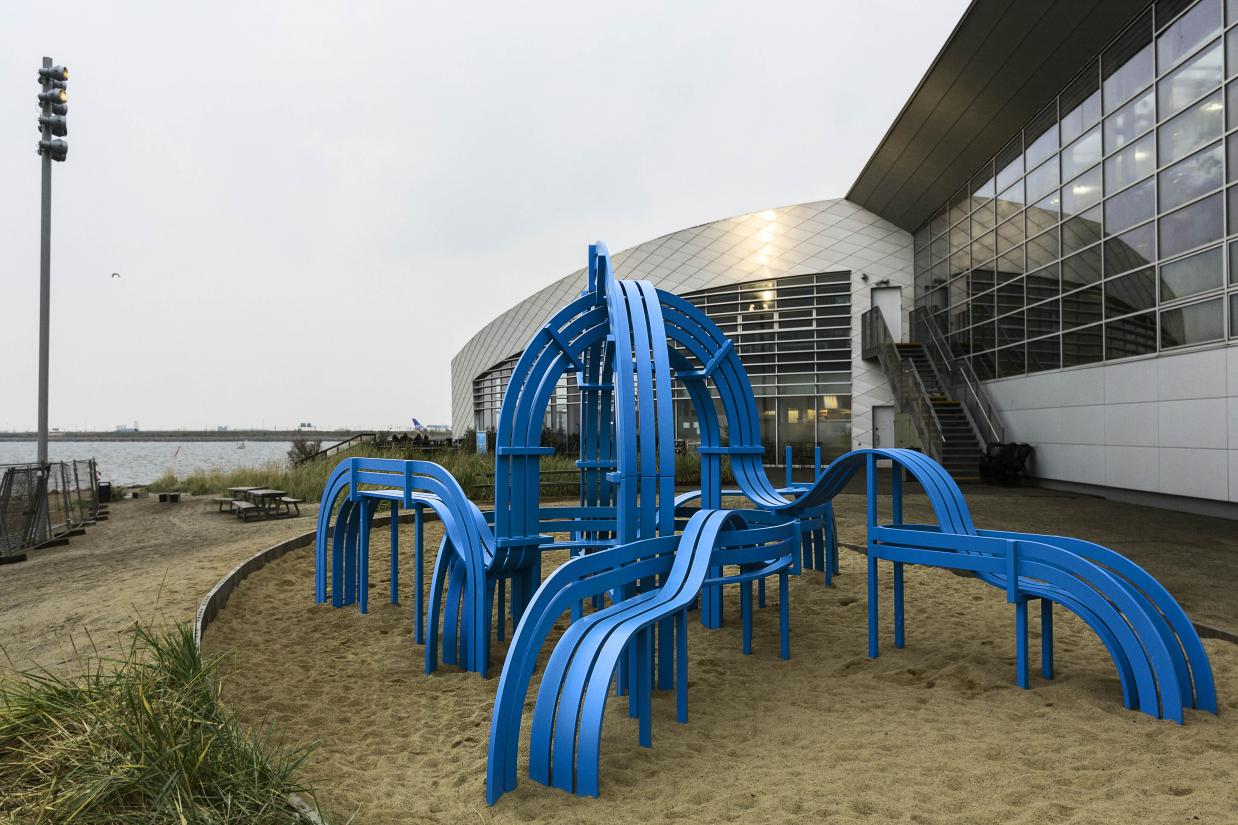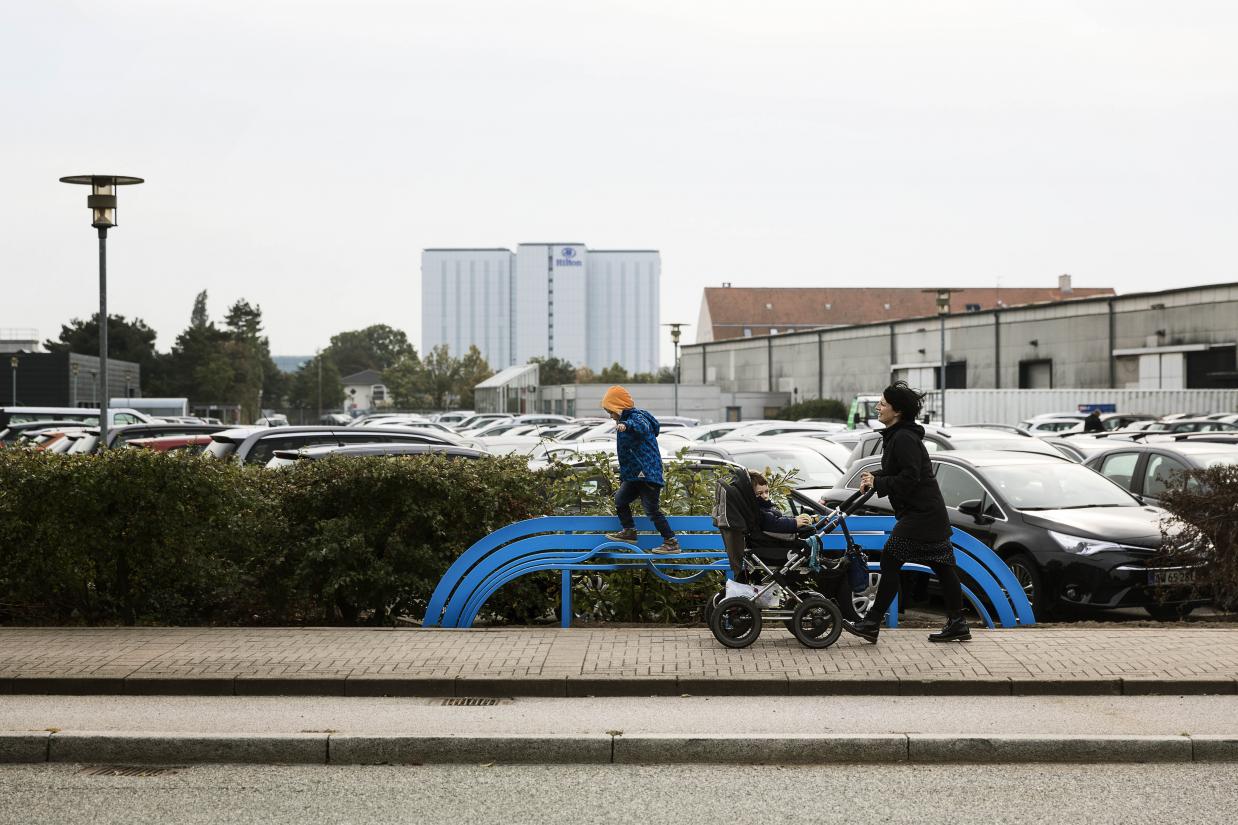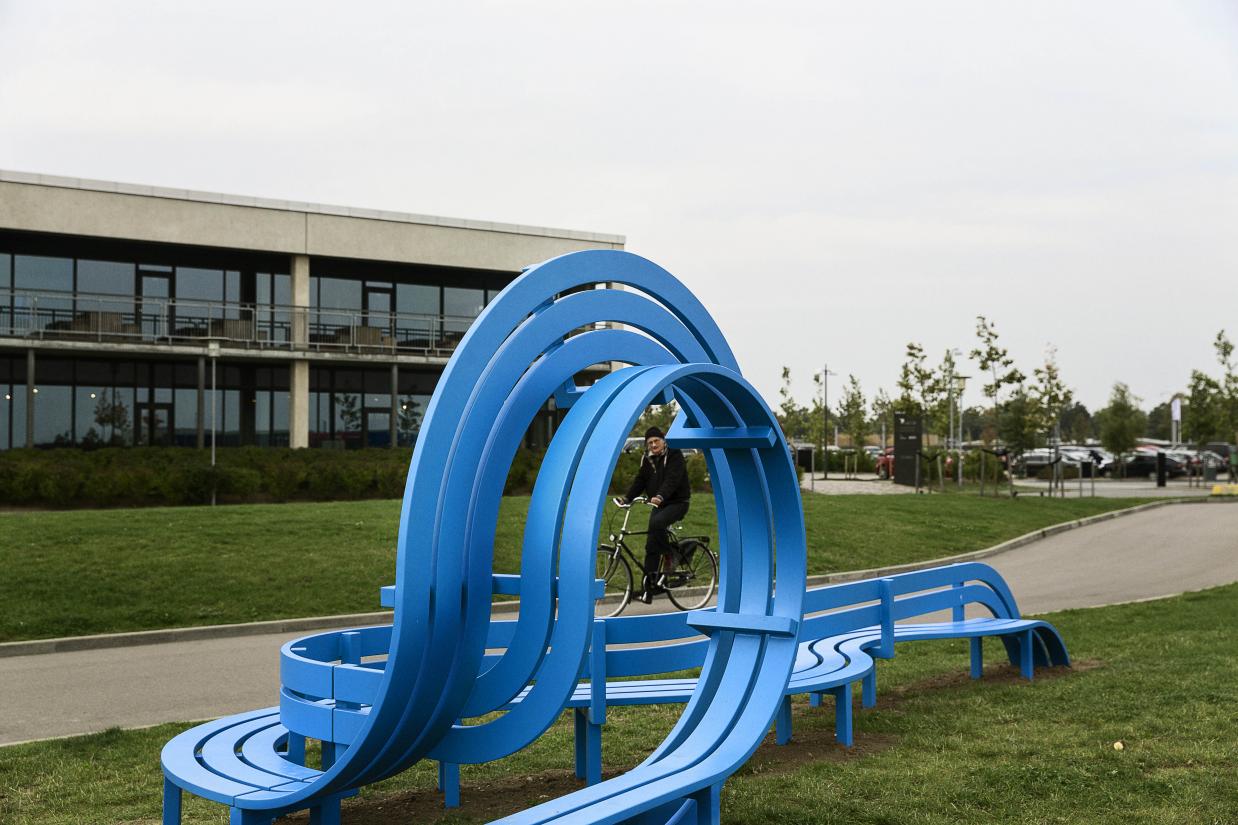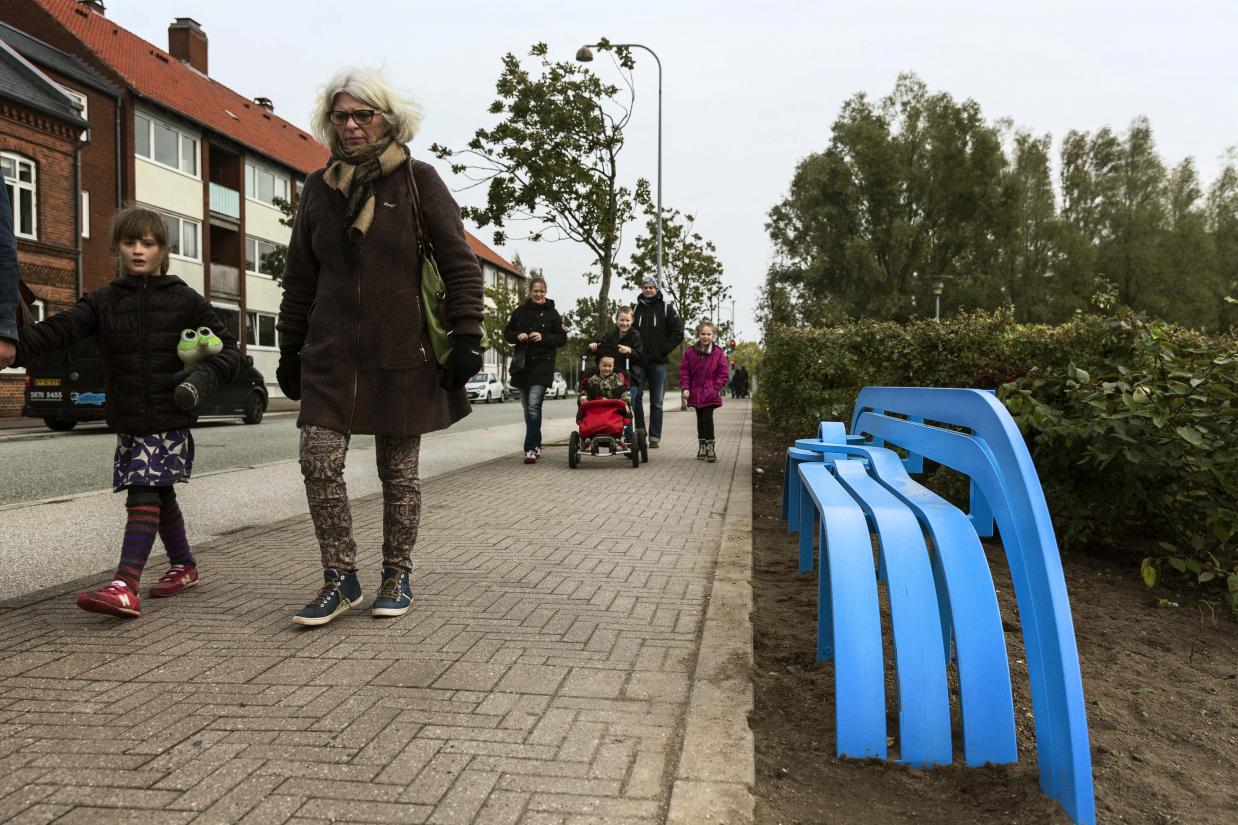With the blue benches guiding visitors from the nearby metro station to the National Aquarium Denmark, Den Blå Planet, the acknowledged Danish artist Jeppe Hein has once again taken his art into the public realm. Not as a neat and decorative art installation but in the form of wild, surprising and useful benches – and a playground with a seaside view at the end of the route to the aquarium.
‘The obvious purpose with the benches is of course to guide the visitors from A to B – in this case, from the metro station to the aquarium. The benches show the way. But they are also a way to discover whether we are on the right path, personally: I would like for people to pause and reflect on their life. The big question now is, do the passers-by seize this opportunity, or do they simply keep walking?’ says Jeppe Hein.
The permanent bench installation is also a meeting place, he explains:
‘The benches create a social space with room for dialogue. A place to meet. That is especially obvious in the playground that concludes the route.’
An innovative addition to the public space realm
Modified Social Benches, is Jeppe Hein’s own term for his benches, which have previously been presented, in other incarnations, on the island of Manhattan and in the Danish city of Aarhus. However, according to Professor Morten Kyndrup, a member of the board for the New Carlsberg Foundation, the benches for National Aquarium Denmark, Den Blå Planet stand out:
‘Jeppe Hein’s bench project for National Aquarium Denmark, Den Blå Planet marks an innovation in art in the public realm. The benches in fact serve four purposes at once: First, in a very concrete way, they show the way from the metro station to the museum. Second, they offer a rest for tired souls making their way home. Third, they invite children to use them for play, a function that is underscored by the fact that the project ends in an actual playground in front of the museum. And fourth, both individually and seen together, the benches have a sculptural, aesthetic function in their setting, which they thus help tie together in a coherent expression. This functional complexity gives the benches an almost magical air, as they stand there, in the urban space, at once commonplace and utterly surprising.’
